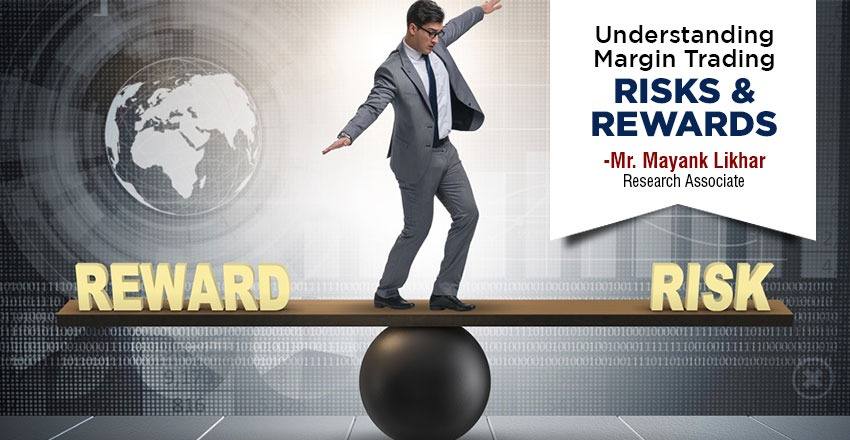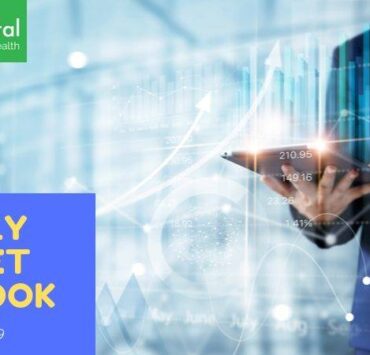Understanding Margin Trading: Risk and Rewards

What is Margin?
Margin means buying securities, such as stocks, by using funds borrowed from the broker. It is similar to buying a house on mortgage.
Margin amount is the money which the broker lends to the trader to buy more securities than what they could otherwise buy with the balance in their account.It is the difference between the total value of securities held in a trader’s account and the loan amount from the broker.
What is Margin Trading Facility?
Margin trade facility (MTF) is basically a loan offered by the broker to purchase stock against some collateral. Margin trading allows the trader to buy more stock than (s) he’d be able to normally.
In the most straightforward term, using MTFessentially means purchasing stocks using loan taken from the broker against the securities you hold in your brokerage account, pledging them as collateral against new positions.Since you are borrowing money from the broker, it will attract interest charges.
Using MTF allows you to take advantage of short-term market opportunities and boost your profits, but it can also do the reverse. Leverage is a double-edged sword, so it needs to be used carefully.
Let’s understand this with an example:
Let’s assume Mr. Rahul is extremely bullish on company ‘Karma’which is trading at Rs 100 and wants to buy 5000 shares. Technically he would require Rs 5,00,000 to execute the trade. However, Rahul only has Rs 2.5 lacsavailable to buy 5000 shares of company XYZ, which means he is short of the other Rs 2.5 lacs.
Through margin trading facility, Rahul can get help from the broker and borrow the required amount to execute the trade. This would allow him to earn more profit as compared to what he would have generated with his own capital.
You might be wondering, if trading with leverage, aka margin trading facility, a good or a bad thing? Let’s understand this with an example assuming that Rahul has fixed target and stop loss of Rs. 5.
| Without Leveraging | With leveraging | |
| Fund Available | 2,50,000 | 5,00,000 |
| CMP | 100 | 100 |
| Number of shares bought | 2500 | 5000 |
Scenario 1: If the stock price goes up
This is the best case scenario for Rahul.
| Cash account
(without leveraging) |
Margin account
(with leveraging) |
|
| CMP | 105 | 105 |
| Traded Price | 100 | 100 |
| Number of shares bought | 2500 | 5000 |
| Profit per share | 105 – 100 = Rs. 5 | 105 – 100 = Rs. 5 |
| Total Profit | 2500 * 5 = Rs. 12,500 | 5000 * 5 = Rs. 25,000 |
In the above scenario, we can see that if the stock price rises, as per Rahul’s prediction, leveraging helps him double his profits than he would have earned without the leverage.
However, if margin trading allows the trader to double their profit, it also magnifies their losses. Let’s take’s Rahul example and see what would happen if the stock price went down.
Scenario 2: If the stock price goes down
| Cash account
(without leveraging) |
Margin account
(with leveraging) |
|
| CMP | 95 | 95 |
| Traded Price | 100 | 100 |
| Number of shares bought | 2500 | 5000 |
| Loss per share | 95 – 100 = Rs. -5 | 95 – 100 = Rs. -5 |
| Total Loss | 2500 * (-5) = Rs. -12,500 | 5000 *(- 5) = Rs. -25,000 |
Now assuming that the stock price fell from Rs 100 to Rs 95, Rahul made a loss of Rs 5 per share. With a leveraged position, Rahul was able to buy 5000 shares, which means he incurred a loss of Rs 25,000. However, if Rahul had not taken margin trading facility from the broker, and had used his own money to buy the shares, his loss would have been limited to Rs 12,5000.
From the above example, we can see that through trading using leveraged position Rahul’s losses extended twice as muchas compared with what he might have lost using the original capital in his account. Plus, there will be an interest charge over and above the actual losses, if Rahul used MTF.
Other costs
Borrowing money isn’t without its costs. When you avail for a margin trading facility from your broker, you also have to pay the interest on your loan. The interest charges are applied to your account until you make payments.
Over time, your debt amount increases as interest charges accrue against you. As debt increases, the interest charges increase, and so on. Therefore, it is advisable to avail margin trading facility only for short-term investments otherwise your interest charges may end up eating away your profits.
Things to take care while using MTF
Using margin trading facility comes with its own risks. So before you jump into it, here are key things you need to take care of:
- If you are newbie in the market, avoid the MTF as it may eat up your investment amount.
- Have a reserve amount of cash or securities before trading in MTF.
- Always take into consideration the cost of borrowing before undertaking the trade using margin trading facility.
- Consider using MTF only in stocks which have high liquidity and relatively stable prices.
- Focus on companies which have large Market Capitalization, pay good dividends and have a relative stable price.
- Have a suitable risk reward ratio.
- Close the position when the Stop Loss triggers, especially when you are leveraging as it may end up trigger the margin call if the losses extends.
- Have a payback plan for margin debt if you are leveraging the money.
- Constantly monitor the stocks so that you may not end up losing the money especially when you are using the margin.
- Always square off the position on or before time.
- Remember that with margin trading, you can lose more funds than you have in your account. So make sure you have a strong risk management strategy in place before you use MTF.
Conclusion
Margin trading can potentially enhance your profits or magnify your losses.Before you trade on margin, it is important to think about how margin trading fits into your overall trading strategy. Margin trading is not right for everyone because it requires a higher appetite for risk than trading on a cash basis.
Having said that, itis a good opportunity for traders with higher risk tolerance because it allows them to increase their return on money. However, it is still debt, so understand that you must pay it off eventually.
“As long as GREED is stronger than COMPASSION, there will always be SUFFERING”
– RUSTY ERIC








